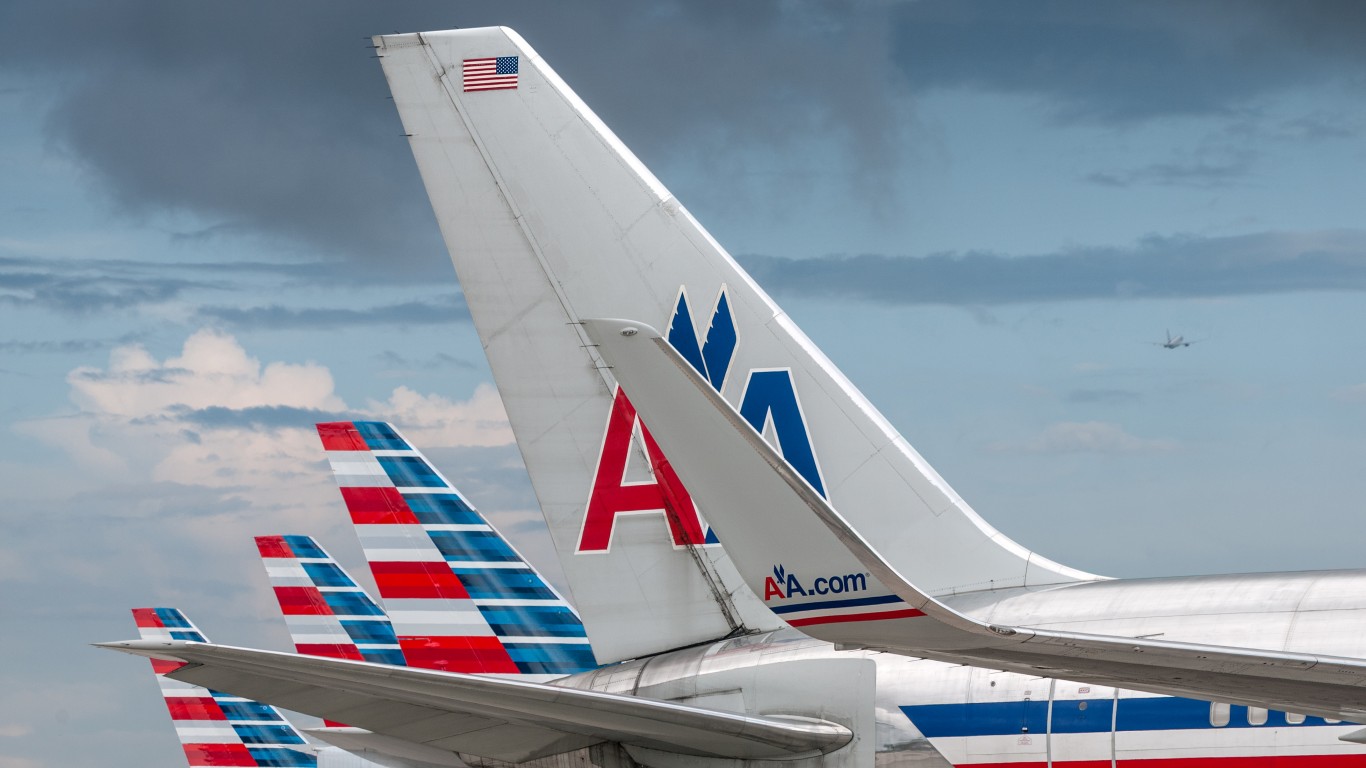Transportation
Southwest, Alaska, American Airline Earnings Could Have Been a Lot Worse

Published:

The best third-quarter outcome that investors could hope for from U.S. airlines is that the carriers wouldn’t implode. It’s not much, but it’s really all there is. Thursday morning, three airlines reported results: Southwest Airlines Co. (NYSE: LUV), Alaska Air Group Inc. (NYSE: ALK) and American Airlines Group Inc. (NASDAQ: AAL). None of the three offered a big surprise.
[in-text-ad]
Southwest reported an adjusted earnings per share loss of $1.99 on operating revenues of $1.8 billion. In the third quarter of 2019, the airline posted earnings per share (EPS) of $1.23 on revenues of $5.6 billion. Analysts were expecting Southwest to post a per-share loss of $2.35 on revenues of $1.7 billion. Compared to the second quarter results of a net loss per share of $2.67 and operating revenue of $1 billion, Southwest made something of a comeback.
Alaska posted an adjusted net loss per share of $3.23 on operating revenue of $701 million. In the same period last year, the airline reported revenue of $2.4 billion and EPS of $2.63. Consensus estimates called for a loss per share of $3.01 and revenue of $678.2 million. In the second quarter, Alaska reported operating revenue of $421 million and an adjusted loss per share of $3.54.
American fared little better. The world’s largest airline based on passenger capacity reported a third-quarter adjusted net loss per share of $5.54 and revenue of $3.2 billion. In the third quarter of last year, American reported revenue of $11.9 billion and EPS of $1.42. Analysts had forecast an adjusted net loss per share of $5.88 and revenue of $2.8 billion. In the second quarter, American reported an adjusted loss per share of $7.82 on revenue of $1.6 billion.
In a year unlike any other in airline history, comparisons to last year’s results are mostly meaningless. What matters in the year of COVID-19 is the company’s balance sheet. Does the airline have enough cash or access to cash to weather another six months or longer of passenger declines of 50% or more?
For the first nine months of the year, passenger load factor at American was down by more than 20 points to 64.2%. At Alaska, load factor was down by 25.5 percentage points year over year to 58.7%, and Southwest reported that load factor dropped by 31.7 points to 52% in the first nine months of the year.
American reported liquidity totaling approximately $15.6 billion and expects to close the fourth quarter with more than $13 billion in total available liquidity, not including a $1 billion at-the-market equity offering. Cash burn is currently about $44 million per day, down from $58 million in the second quarter. By the end of the fourth quarter, American expects the average daily cash burn to fall to $25 million to $30 million per day.
Southwest also reported liquidity totaling $15.6 billion at the end of September and cash burn of $15 million a day in September, down from an average of $16 million per day for the entire quarter. The airline expects a cash burn of $12 million per day in October and an average of $11 million per day in the fourth quarter. CEO Gary Kelly noted, “While we continue to make progress on reducing cash burn, in order to achieve cash burn break even, we estimate operating revenues will need to recover to an estimated 60 to 70 percent of 2019 levels, which is roughly double our third quarter 2020 levels.”
As of October 20, Alaska reported liquidity of $5.5 billion, including $3.7 billion in cash and marketable securities. The airline’s average daily cash burn dropped from $5 million in the second quarter to about $4 million in the third quarter. CEO Brad Tilden commented, “Each of the last six months has been better than the month before in terms of flights offered and passengers carried, and to date, we’ve kept our net debt unchanged.”
American Airlines announced earlier this month that it would begin furloughs for some 19,000 employees. Almost 17,000 Southwest employees have voluntarily taken leaves, buyouts or early retirement, and the company does not expect to have to begin furloughs this year. Alaska has furloughed more than 500 employees recently, adding to 720 who took buyouts or early retirement and another 4,500 who took voluntary leaves.
Southwest’s shares traded up about 0.9% in Monday’s premarket session, at $40.20 in a 52-week range of $22.47 to $58.83. The consensus price target on the stock is $45.47. The airline’s strong liquidity likely is responsible for the uptick.
American Airlines stock traded down about 2.7% to 12.40, in a 52-week range of $8.25 to $12.87. The stock’s price target is $11.25.
Alaska Air stock traded at $39.00, down about 1.7% in the premarket session. The 52-week range is $20.02 to $72.22 and the price target is $49.19.
The last few years made people forget how much banks and CD’s can pay. Meanwhile, interest rates have spiked and many can afford to pay you much more, but most are keeping yields low and hoping you won’t notice.
But there is good news. To win qualified customers, some accounts are paying almost 10x the national average! That’s an incredible way to keep your money safe and earn more at the same time. Our top pick for high yield savings accounts includes other benefits as well. You can earn up to 3.80% with a Checking & Savings Account today Sign up and get up to $300 with direct deposit. No account fees. FDIC Insured.
Click here to see how much more you could be earning on your savings today. It takes just a few minutes to open an account to make your money work for you.
Thank you for reading! Have some feedback for us?
Contact the 24/7 Wall St. editorial team.